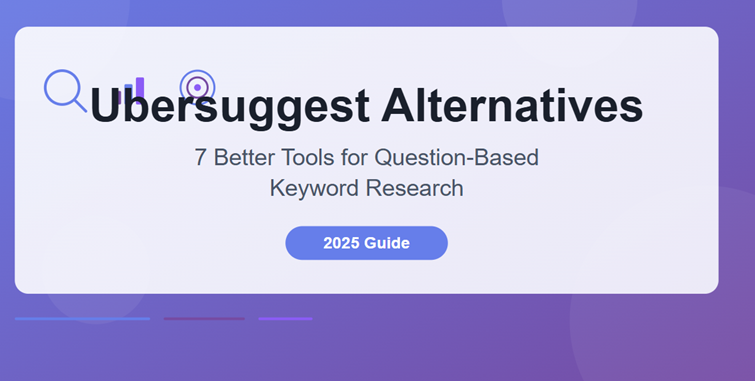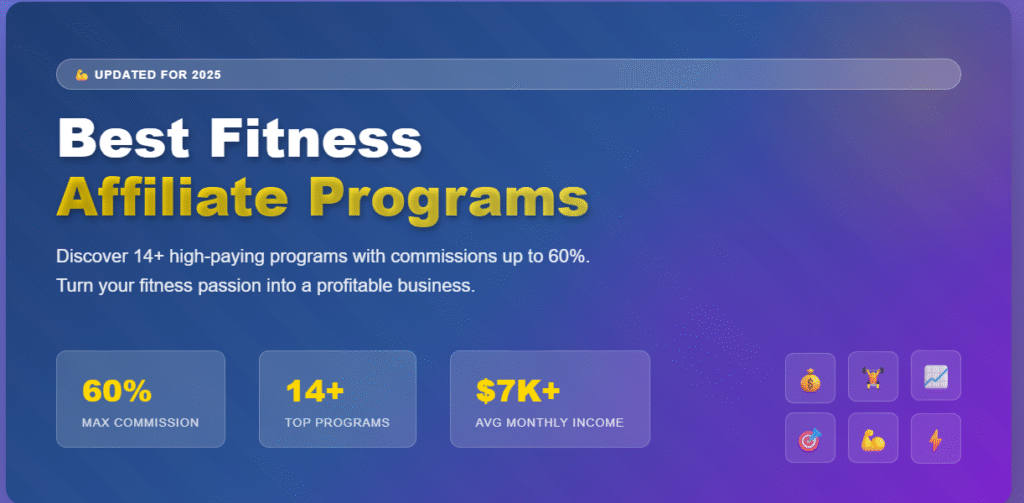Content ideation isn’t about waiting for lightning to strike. It’s about building systems and strategies that keep your creative well full. Let’s dive into how you can transform from someone who struggles with ideas to someone who has more ideas than time to execute them.
Understanding Your Audience is Everything
The foundation of endless content ideas starts with knowing your audience inside and out. The most successful creators don’t create content they think is cool. They create content their audience actually needs.
What problems keep your audience up at night?
What questions do they repeatedly ask?
What challenges do they face in their daily lives or work?
Your content should feel like you’re reading their minds, addressing exactly what they’re struggling with.
Your Audience Intelligence Toolkit
Create a “Questions Collection” document where you log every question you receive in comments, DMs, emails, or conversations. Set a weekly reminder to review this list and turn the most common questions into content pieces.
Use Google Forms to survey your audience directly about their biggest challenges, then create content series addressing each pain point. Monitor your analytics to see which content gets the most engagement and comments, then create follow-up pieces diving deeper into those topics.
Track the trending topics and hashtags in your niche, but don’t just follow them blindly. Look for the underlying concerns and interests that make these topics resonate. When you understand the “why” behind what’s trending, you can create content that feels both timely and timeless.
The Trend Detective Method
Set up Google Alerts for key terms in your industry and check them every Monday morning. Use tools like BuzzSumo or Exploding Topics to identify rising trends before they peak. Create a spreadsheet tracking trending hashtags with columns for the hashtag, why it’s trending, and your unique angle on the topic. Spend 15 minutes each day scrolling through your industry’s hashtags on Twitter, TikTok, or Instagram to spot emerging conversations.
Mining Gold from Everyday Sources
Inspiration for content is everywhere once you know where to look. Industry blogs and news sites aren’t just for staying informed. They’re idea goldmines. But don’t just read them; analyze them. What angles are being covered? What perspectives are missing? What would you add to the conversation?
The Content Goldminer’s Strategy
Create a bookmark folder called “Content Inspiration” and save 3-5 articles each week that spark ideas. For each saved article, write a one-sentence note about your unique take on the topic. Use tools like Feedly or Pocket to organize industry publications and set aside 30 minutes every Tuesday to review them specifically for content angles. Keep a running document of “contrarian takes” where you note popular opinions you disagree with, then create content explaining your perspective.
Online communities like Reddit, Facebook groups, and niche forums are treasure troves of authentic questions and discussions. These spaces reveal what people are really talking about when they think no one important is listening. Screenshot interesting conversations, bookmark compelling questions, and note recurring themes.
Whazzuup lets users find great opportunities from Reddit questions and turn them into content.
Community Deep-Dive Technique
Join 5-7 Facebook groups, subreddits, or forums where your target audience hangs out. Spend 20 minutes daily browsing these communities and screenshot 2-3 interesting discussions. Create a folder on your phone called “Content Ideas” to store these screenshots. Use Reddit’s search function to find questions that start with “How do I,” “Why does,” or “What’s the best way to” in your niche. Set up IFTTT or Zapier to automatically save highly upvoted posts from relevant subreddits to a Google Doc.
Your competitors’ content isn’t something to copy. It’s market research. What’s working for them? What gaps do you notice in their approach? What unique perspective can you bring to similar topics? This isn’t about imitation; it’s about finding your unique voice in the broader conversation.
The Competitive Intelligence Framework
Create a spreadsheet tracking your top 10 competitors’ content with columns for topic, format, engagement rate, and your potential unique angle. Use tools like Social Blade or BuzzSumo to identify their most successful content from the past month. Set a monthly calendar reminder to analyze one competitor’s content strategy and note three gaps they’re not addressing. Follow competitors’ comment sections to see what questions their audience asks that they don’t answer.
Don’t underestimate your personal experiences and passions. The stories you tell yourself that “nobody wants to hear about this” are often exactly what makes your content authentic and engaging. Your struggles, victories, behind-the-scenes moments, and lessons learned are uniquely yours.
Your Personal Story Archive System
Start a daily voice memo or journal entry capturing one lesson learned, challenge faced, or interesting observation from your day. Review these weekly to identify patterns and content themes. Create a “Story Bank” document with sections for failures, victories, funny moments, and lessons learned. When you’re stuck for content, browse this bank for inspiration. Ask friends and family what stories you tell repeatedly in conversation, then turn these into content pieces.
Breaking Through Creative Blocks
Creative blocks aren’t creative failures. They’re signals that you need to change your approach. When you hit a wall, it’s time to step outside your usual content patterns.
Try switching formats entirely. If you typically write long-form posts, experiment with quick tips. If you’re always creating tutorials, share a personal story. If you focus on industry insights, break down a trending topic. Sometimes the best way forward is sideways.
The Creative Block Breaker Protocol
Create a “Format Wheel” with 8-10 different content types (tutorial, personal story, industry analysis, quick tips, behind-the-scenes, Q&A, etc.). When blocked, spin the wheel (literally or digitally) and create content in whatever format it lands on. Keep a “Block Breaker” list of 20 simple content prompts like “Share your worst mistake,” “Explain something complex in simple terms,” or “Show your workspace.” Set a 15-minute timer and choose one prompt to create quick content when you’re stuck.
Collaboration can be a creative catalyst. Reach out to other creators in your space for joint projects, interviews, or even casual brainstorming sessions. Fresh perspectives often unlock ideas you’d never reach on your own.
The Collaboration Catalyst Method
Create a spreadsheet of 20 creators in adjacent (not competing) niches and reach out to one person each week with a specific collaboration idea. Join creator communities like Content Creator Coalition on Facebook or Discord servers for your industry. Schedule monthly “idea exchange” calls with 2-3 other creators where you each bring one challenge and brainstorm solutions together. Use Instagram or Twitter polls to crowdsource opinions on topics you’re exploring.
The Power of Strategic Content Formats
Different content formats serve different purposes and appeal to different learning styles. Tutorials establish you as an expert while providing immediate value. Personal stories build connection and trust. Behind-the-scenes content satisfies curiosity and humanizes your brand. Industry insights position you as a thought leader.
The key is rotating through these formats strategically rather than randomly. Plan your content calendar to include a mix that serves your audience’s varied needs while keeping your creative process fresh.
The Strategic Format Mix Blueprint
Create a monthly content calendar template with designated days for different formats (Tutorial Tuesday, Personal Story Thursday, Industry Insight Monday, etc.). Use the “Rule of 5” where every five pieces of content include one tutorial, one personal story, one industry insight, one behind-the-scenes piece, and one audience interaction post. Track which formats get the most engagement using a simple spreadsheet, then adjust your mix accordingly. Create templates for each format type with prompts and structures to speed up creation.
Building Your Ideation System
The most successful content creators don’t rely on inspiration. They build systems that generate ideas consistently. Start with a digital idea notebook where you capture thoughts, observations, and potential topics as they occur to you. Use your phone, a dedicated app, or whatever tool you’ll actually use consistently.
The Digital Idea Capture System
Download and set up one idea capture tool (Notion, Apple Notes, Google Keep, or Evernote) and create a shortcut on your phone’s home screen. Use the voice memo feature to quickly capture ideas while driving or walking, then transcribe them later. Create categories in your idea bank: “Quick Wins” (easy to create), “Deep Dives” (research required), “Personal Stories,” and “Trending Topics.” Set a phone reminder for 9 PM daily to review the day and add at least one content idea to your bank.
For content creators looking to streamline their idea management and content planning, consider trying Whazzuup, an app designed specifically to help creators come up with ideas by helping you find trending discussions and questions on Reddit and Quora. With Whazzuup, you can search for keywords in your niche and get dozens of related quora and reddit questions that REAL people are asking.
The best part?
We analyze each question for intent – are they curious, have a pain point, or looking to purchase something?
You can even analyze a search result with AI to see emerging trends and uncover fresh content ideas.
These platforms reveal what questions people are actively searching for in your niche. They’re not just keyword tools. They’re windows into your audience’s mind.
The Audience Mind-Reading Toolkit
Block 30 minutes every Friday morning to run your main keywords through AnswerThePublic, Ubersuggest, or Google’s “People Also Ask” feature. Create a content calendar spreadsheet and populate it with questions from these tools. Use Google Trends to identify seasonal patterns in your niche and plan content 2-3 months ahead of trend peaks. Set up Google Search Console (if you have a website) to see which queries bring people to your existing content, then create new content targeting related questions.
Actively engage in relevant online communities not just as a creator looking for content, but as a genuine participant. The more authentically you participate, the better you’ll understand what resonates with your audience.
The Community Engagement Strategy
Commit to answering 5 questions or participating in 3 discussions each week across your chosen communities. Create a simple tracking sheet noting interesting discussions and potential content angles you discover. Use community insights to validate content ideas before creating them by posting questions like “Would you find X helpful?” Set calendar reminders to check community discussions during your most creative times of day.
Regularly analyze top-performing content in your niche, but look beyond the surface metrics. What emotions do these pieces evoke? What structures do they follow? What makes them shareable? Understanding the “why” behind successful content helps you create your own hits.
The Viral Content Decoder
Create a “Content Teardown” template with sections for headline structure, emotional triggers, content format, engagement tactics, and your unique spin. Analyze one viral piece of content each week using this template. Use tools like BuzzSumo to find the most shared content in your niche from the past month and study the common elements. Join Facebook groups or Discord servers where creators share successful posts and study the patterns in what works.
Staying Ahead of the Curve
Content creation isn’t just about keeping up with trends. It’s about anticipating them. Stay curious about adjacent industries and broader cultural shifts. Often, the most engaging content comes from connecting seemingly unrelated ideas.
Authenticity continues to be the driving force behind successful content. Audiences can detect manufactured authenticity from miles away, but they’re drawn to creators who share genuine insights, struggles, and perspectives.
The multi-format approach is becoming essential. Your audience consumes content differently depending on their mood, location, and available time. The same core idea might work as a tweet, a video, a blog post, and an infographic, each serving different consumption preferences.
Your Action Plan for Endless Ideas
Stop waiting for inspiration and start building your idea generation machine. Keep that digital notebook handy and use it religiously. Engage genuinely in communities where your audience gathers. Make content analysis a weekly habit, studying what works and why.
Most importantly, experiment boldly with different formats and approaches. Your next breakthrough piece of content might come from trying something completely different from your usual style.
The 30-Day Content Transformation Challenge
Start with the “30-Day Idea Challenge”: commit to capturing at least one content idea every day for 30 days using the methods above. Create a simple scoring system (1-5) to rate your ideas based on audience value, your expertise, and creation effort. Schedule “Content Planning Sundays” where you spend 45 minutes reviewing your idea bank and planning the week’s content. Track which idea sources generate your most successful content and double down on those methods.
The goal isn’t just to never run out of ideas. It’s to have so many good ideas that your biggest challenge becomes choosing which ones to pursue. With the right systems and mindset, that’s not just possible; it’s inevitable.
Ready to Transform Your Content Creation Process?
The strategies in this guide will help you build a sustainable content creation system, but the real magic happens when you start implementing them consistently. If you’re serious about never running out of content ideas again, consider Whazzuup to streamline your content planning and idea management process.
[Try Whazzuup today and take the guesswork out of content creation →]
Remember: every expert was once a beginner, and every piece of viral content started as just an idea. Your next great piece of content is waiting to be discovered in your daily observations, audience interactions, and creative experiments. The question isn’t whether you have good ideas. It’s whether you’re paying attention to them when they appear.


